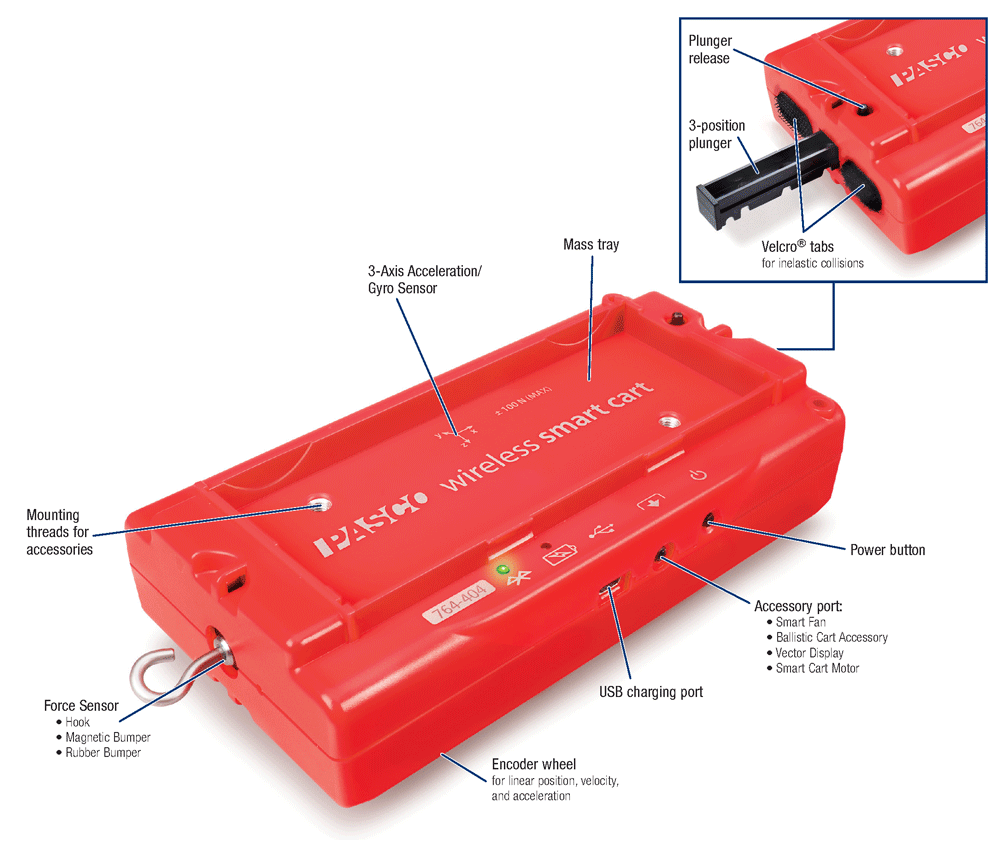Teacher Spotlight: Using PASCO's Smart Cart to Show the Relationship Between Potential and Kinetic Energy
Physics Educator, Greg Jacobs, shares some tips on introducing Bertha's Rule of Ones in his classroom.
This article is a repost of Greg Jacobs's original post from his site, Jacobs Physics.

How Do You Double the Speed of a Cart?
I've shared broadly my "double the speed of a cart" in-class laboratory exercises. This is my introduction to Bertha's Rule of Ones. In each of four situations, students use simple kinematics equations and semi-quantitative reasoning to predict a factor of change.
One exercise asks students to roll a cart down an incline, then double the cart's mass - what happens to the maximum speed of the cart on the same incline? It's easy to double the mass of a PASCO cart, just put a specially-fitted 250 g bar on top.
Another asks students to double the travel time for the cart rolling down the incline, and predict what happens to the distance traveled by the cart. Again, simple - just release the cart from rest and use frame-by-frame video. The PASCO tracks even have a centimeter scale taped on!
It seems like it would be more complicated to double a cart's acceleration, but it's not - the acceleration of a PASCO cart on an incline is gsinθ. For small angles, doubling the angle θ will also double the acceleration. Changing, say, from 6 degrees to 12 degrees gives a pretty obviously doubled acceleration.
The tough one is, how do I double the initial speed of a cart rolling up an incline?
Answer: use the plunger on the PASCO cart.

Take a look at the photo. [*Note: We updated the photo with one from our website to display the most current Smart Cart plunger.]
When the plunger is depressed, it clicks and stops at each of these lines. Then, a quick press of the button on top releases this plunger.
Put the plunger up against a wall, or against the stopper that can be attached to a PASCO track. Push the plunger in to position 1; push the button to release. The cart will move with some initial speed. (No clue what speed! But it will be a reasonably consistent speed each time.)
Then, push the plunger to position 2 and push the button to release. The cart will move with twice the speed as when you used position 1. And position 3 gives three times the speed of position 1.
Why does this work? Because the plunger is converting spring potential to kinetic energy. Set the spring potential formula (1/2)kx2 equal to the kinetic energy formula (1/2)mv2: the spring compression x has a linear relationship with the speed v.
Thank you to educators like Greg for sharing your experience with PASCO products with other educators and learners! Visit our Smart Cart Product Guide for more information about our Wireless Smart Cart!







